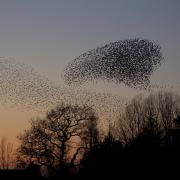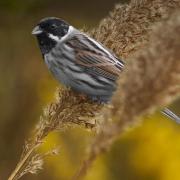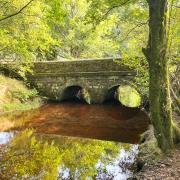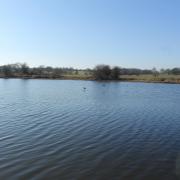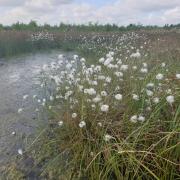Kirkless was once the site of the largest iron and steel works in Europe. Now it has been transformed by The Lancashire Wildlife Trust. Alan Wright wanders among the rabbit rocks

If you stand on the rabbit rocks at Kirkless Nature Reserve, on a clear day you can see for miles – right across Wigan borough and, on some days, you can see Snowdonia.
The rabbit rocks are the major feature of a reclaimed iron and steel works, once the largest in Europe. They are huge cylindrical blocks of slag, formed at the bottom of furnaces. In the smelting process the rocks were already solidifying in the rounded buckets, which were emptied creating a hillside unlike anywhere else in the United Kingdom.
In fact, on first sight, I was convinced that this feature would and should be a tourist attraction anywhere else in the world. Maybe that’s one for the future, if funding becomes available.
At this time, the rabbit rocks attract other things, with many plants covering the area but also rabbits, hence the name. Gaps between the cylindrical rocks provide a safe home for bunnies.

Kirkless can be accessed from Belle Green Lane, in Ince-in-Makerfield, walking along the path the rabbit rocks appear on your right. As you climb the path up to the top, you look down on the locks of the Leeds-Liverpool Canal.
Along with remnants of many buildings from the iron and steelworks, including an impressively long wall, the canal offers memories of the Industrial Revolution, which dominate the surrounding towns of Wigan and St Helens.
All this ties in with Wigan Greenheart, the Carbon Landscape and the Great Manchester Wetlands Partnership, all projects reclaiming former industrial areas for nature.
At the base of the rabbit rocks is a remarkable meadow. The industrial use of the site has left alkaline soils more common on the coastal dunes at Formby and St Annes. These out-of-place grasslands support coastal plants like bladder campion, common broomrape and cat’s ear. They are pretty rare in inland areas.

The west of the nature reserve is Wigan’s only surviving natural hay meadow. It is isolated from the town and development by the railways serving the coalfield and the town. The meadow is cut annually by a farmer and this has helped the meadow plants return to the site.
Kirkless is one of the important areas for willow tits, the UK’s most endangered small bird. They thrive in the woodland around here, their networks protected from development in the nature reserve. Other small birds include blue tit, great tit and goldcrests which are often spotted in the woodland.
When you are visiting Wigan you should take an extra hour or two to wander round this amazingly atmospheric place. Even better, visit during the annual open day or become a volunteer and a Friend of Kirkless.
If you need proof that wildlife can take back areas that have been devastated by man, Kirkless is it.
















